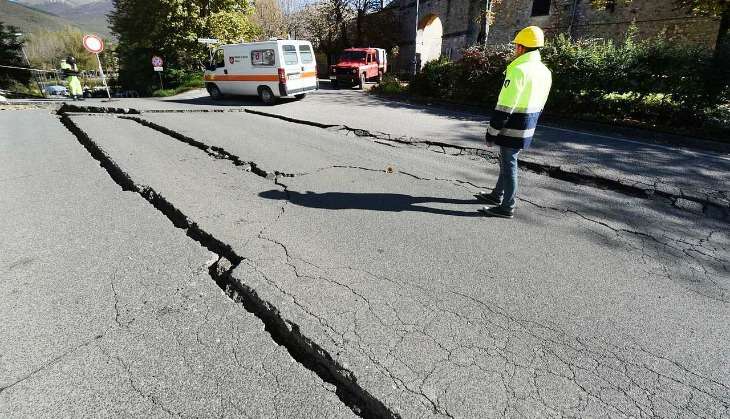
Scientists are developing large structures inspired by 'cloaking' materials for sound and light, which may be used to protect buildings from earthquakes.
Earthquakes travel in waves, much as sound and light do. Scientists have previously designed materials with internal structures that interfere with the propagation of sound and light.
Now, researchers at Imperial College London in the UK, with collaborators in France, are working on making bigger versions of these structures, which could be used to control the propagation of earthquakes.
Trees act as resonators, which oscillate at certain frequencies, even at long wavelengths. In the right arrangement, the interaction of resonating trees can redirect the energy of seismic waves deep into the soil, reducing damage.
This approach is based on metamaterials, artificial arrangements of resonators with unusual electromagnetic properties, researchers said.
Metamaterial 'invisibility cloaks' have already been used to make very small objects invisible to the eye by redirecting light waves.
Now, large-scale versions could be created to emulate the resonance of trees and make buildings 'invisible' to earthquakes.
"Wouldn't it be great if we could surround a historic castle or a nuclear power station with a metamaterial, so that when the seismic waves come at it they are sent around or diverted into the ground," said Professor Richard Craster, Head of the Department of Mathematics at Imperial.
"The building would remain perfectly still, not damaged.This is what we want to do," said Craster.
Earlier this year, Dr Andrea Colombi, also from Imperial, with Craster and colleagues, demonstrated that a dense forest behaves as a natural seismic metamaterial.
By generating vibrations from a crane and measuring the effects with seismometers, they found that the resonating trees offer local protection against surface waves of certain frequencies.
In a natural forest, researchers noted that the irregular height of trees and of the gaps between them offered protection against a larger range of frequencies than a uniform array would.
If the trees are arranged by decreasing height, they would cover an even wider range of seismic frequencies.
Scientists call this a 'metawedge', which could eventually be created with real trees or poles acting as artificial resonators.
Metawedges can only deal effectively with waves coming from two directions, but the researchers are hopeful they can find solutions to this.
There are also other potential applications for metawedges, for example using them to mask other kinds of vibrational waves that can impact buildings.
"Another thing we care about is, for example, the vibration coming from railway lines," Craster added.
--PTI







![BJP's Kapil Mishra recreates Shankar Mahadevan’s ‘Breathless’ song to highlight Delhi pollution [WATCH] BJP's Kapil Mishra recreates Shankar Mahadevan’s ‘Breathless’ song to highlight Delhi pollution [WATCH]](https://images.catchnews.com/upload/2022/11/03/kapil-mishra_240884_300x172.png)

![Anupam Kher shares pictures of his toned body on 67th birthday [MUST SEE] Anupam Kher shares pictures of his toned body on 67th birthday [MUST SEE]](https://images.catchnews.com/upload/2022/03/07/Anupam_kher_231145_300x172.jpg)






